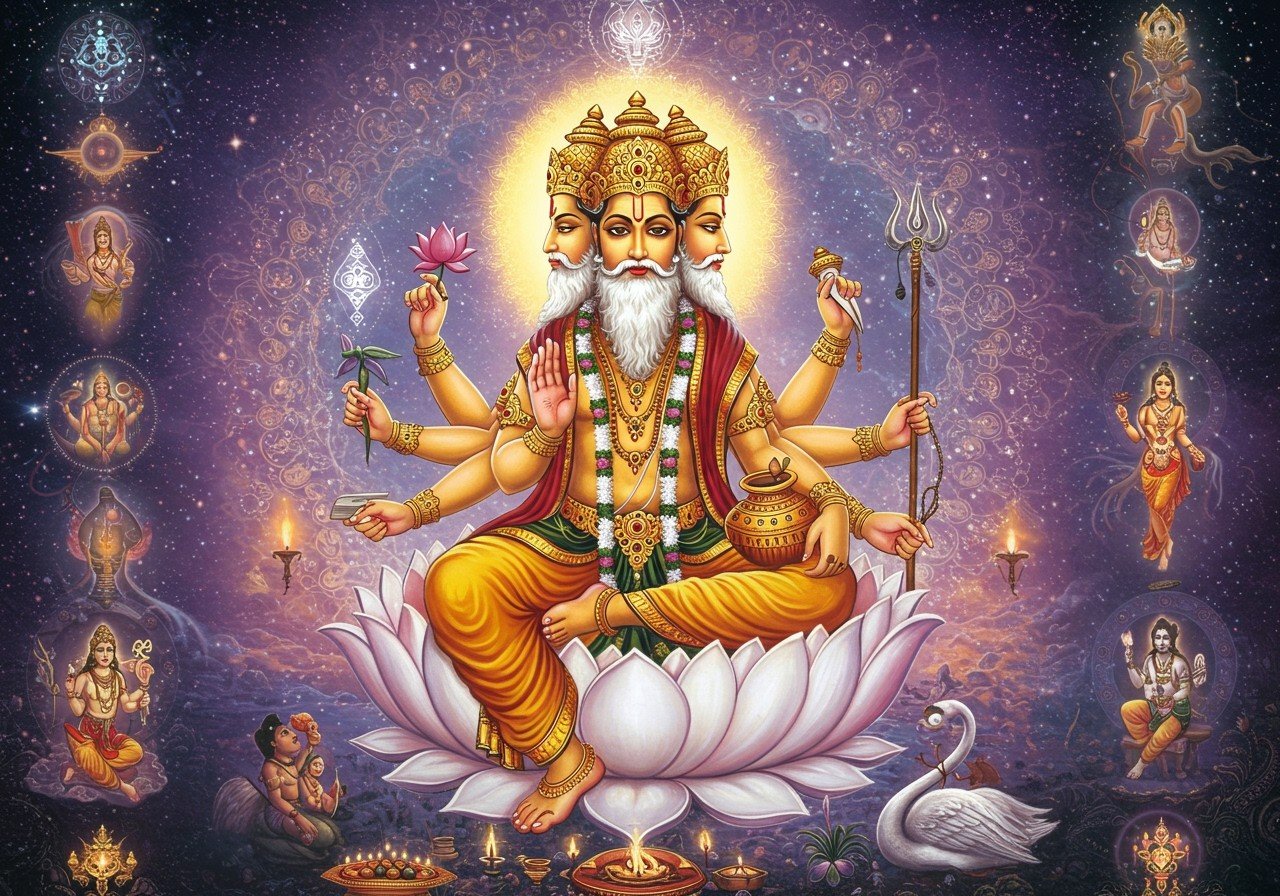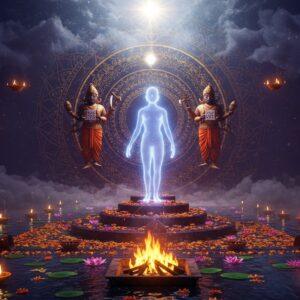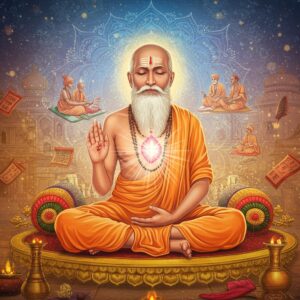
In Hinduism, Brahma holds a revered position as the god of creation. He is a prominent member of the Trimurti, the divine trinity that also includes Vishnu the Preserver and Shiva the Destroyer. A deeper understanding of Brahma’s significance can enrich your appreciation of Hindu traditions and rituals. This article delves into Brahma’s attributes, duties, and origins, connecting you with your cultural heritage.
Who is Brahma?
Brahma is recognized as the creator god in Hinduism. His name originates from the Sanskrit word for “growth” or “expansion.” Depictions of Brahma in Hindu art often portray him with four heads, each symbolizing one of the four Vedas, the sacred scriptures of Hinduism. This imagery emphasizes his profound connection to knowledge and wisdom. Brahma’s association with Saraswati, the goddess of knowledge and arts, further strengthens this connection. It is worth noting that in contemporary Hinduism, Brahma is not as widely worshipped as Vishnu or Shiva, potentially due to philosophical shifts towards preservation and destruction. Brahma’s vehicle, the swan or goose (Hamsa), further symbolizes knowledge and discernment, highlighting his insightful nature.
At Poojn.in, you can discover various puja items and idols dedicated to Lord Brahma, allowing you to create a personalized altar in your home. Browse our collection of Lord Shiva murtis, camphor, and other essential puja samagri to enrich your spiritual practice. Visit Poojn.in today to explore the diverse range of products available to enhance your devotion.
What are Brahma’s Responsibilities?
Brahma’s primary role in Hindu cosmology is creation. He is believed to have brought forth the universe and all living beings within it. Hinduism perceives time as cyclical, with Brahma presiding over a “Kalpa,” a cosmic day of creation spanning billions of human years. This role complements Vishnu’s duty of preservation and Shiva’s role of destruction, forming a balanced cycle of existence. Brahma’s presence in Hindu mythology extends to various narratives, including the creation of the goddess Durga to vanquish the demon Mahishasura. He is also associated with the concept of the caste system as described in the Rigveda’s Purusha Sukta. Despite his significant contributions, relatively few temples are exclusively dedicated to Brahma, possibly due to certain narratives that diminish his prominence. Exploring these stories provides a deeper understanding of the complexities within Hindu mythology.
How was Brahma Created?
Hindu mythology presents various accounts of Brahma’s origin. One prominent narrative describes his emergence from a lotus flower that sprouted from Vishnu’s navel, symbolizing interconnectedness and the cyclical nature of existence. Other myths depict Brahma as self-born (Svayambhu) or originating from the cosmic spirit Brahman, emphasizing his primordial nature. The concept of the Hiranyagarbha, the cosmic egg, further connects Brahma to the origin of the universe and the potential for all creation. These diverse creation stories offer rich symbolism and deeper insights into Hindu metaphysics and cosmology.
Exploring Brahma’s Legacy: FAQs
Embarking on a journey to understand Brahma opens doors to a deeper appreciation of the intricate tapestry of Hindu beliefs. His role as the creator god highlights the importance of beginnings, knowledge, and the essence of life itself. While not as prominently worshipped today as Vishnu or Shiva, Brahma’s presence in Hindu cosmology is paramount.
How does Brahma connect to Hindu practices today? Despite the limited number of temples dedicated solely to him, Brahma’s significance remains integral to Hindu cosmology and philosophy. He is revered as the originator of the universe and the embodiment of creative power.
Are there specific rituals or festivals associated with Brahma? While there isn’t a specific day dedicated solely to Brahma worship, he is honored during certain festivals and rituals related to creation and knowledge, particularly during specific Vedic ceremonies and regional celebrations.
Poojn.in is your trusted source for all things related to Hinduism. Find high-quality religious idols, incense, and a wide variety of puja items. Visit Poojn.in or call our helpline today.
What are the key symbols associated with Brahma? Brahma is often depicted with four heads, representing the four Vedas, and four arms holding symbolic objects like a lotus, a scepter, a water pot, and prayer beads. These represent knowledge, power, creation, and the passage of time, respectively. His vehicle, the swan (Hamsa), symbolizes wisdom and discernment.
Why is Brahma less worshipped than Vishnu or Shiva? The reasons for Brahma’s diminished prominence in modern worship are complex and debated. Some theories suggest it’s due to narratives that portray him in a less favorable light, or the shift in focus towards the preservation and destruction aspects of the cosmic cycle represented by Vishnu and Shiva.
Brahma’s stories and symbolism serve as a constant reminder of the universe’s vastness and our place within it. Embracing Brahma’s legacy connects us to a rich cultural heritage, providing insight and inspiration for honoring Hindu traditions. By delving into his narratives and understanding his symbolism, we gain a deeper appreciation for the intricate web of Hindu beliefs and the profound role of the creator god within it.


